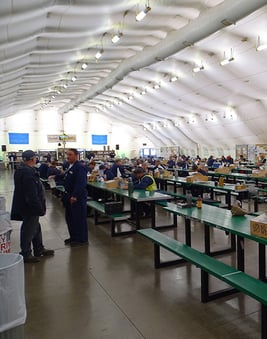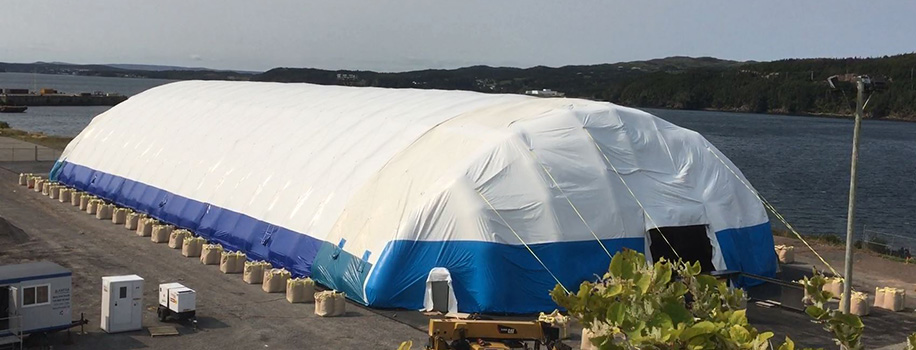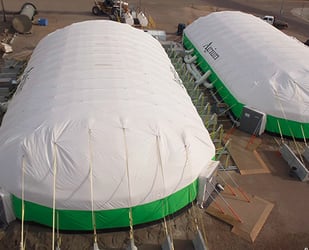Temporary shelters, such as blast resistant tents, offer protection for those working in high-risk environments.

The most obvious and important reason for investing in a blast resistant tent is, of course, the well-being of workers. You care greatly about your employees and want to guarantee they face little risk of hazards while doing their duties.
Many of America’s industrial plants handle combustible resources. If the worst happens, shockwaves, wind and fire could rip across the workplace.
Industrial tents offer safety where there’s a potential for hazards such as projectiles, pressure waves and more.
This post will cover what industrial tents are, when they are necessary, and how to order or rent a blast resistant tent for your job site.
To create an injury-free environment it’s wise to stay vigilant and have the right resources in place. Let’s explore the essential safety components of a successful turnaround.
Types of Industrial Tents
Blast resistant tents are a lightweight, transportable solution for safeguarding employees and assets from an explosion. Here are the two most common types of tents.
Air-inflated shelters
This non-rigid tent uses air-filled columns for support. It has three major parts: the interior shell, the inflatable leg assembly and the exterior shell (typically made from fire-resistant fabric).
An air-inflated shelter absorbs pressure waves in the event of an explosion, and its “soft” construction minimizes additional injuries should it deflate.
Dynamic Air Shelters specializes in air-inflated industrial tents.
Rigid structures overlaid with a cover
This type of blast resistant tent is made of metal support beams and fabric. Also called a “clear-span tent,” its fixed skeleton supports the tent fabric on the outside. The free space inside the structure is maximized using a design without a center pole.
Despite being made for explosions, it is conceivable for the stiff tent supports to fail, causing harm or damage.
Protection From Specific Industry Hazards
A blast resistant tent is a lower-cost alternative to building a permanent structure. The tents are easy to mobilize and can be fitted with climate control, such as HVAC, and customized lighting.
Industries that use tents include oil and gas, mining, petrochemical and refineries. They can be used for:
- Break rooms
- Meeting rooms
- Offices
- Laboratories
- Warehouses
- Shelter-in-place operations
Consider a blast resistant tent for turnarounds or for anytime your safety team identifies hazards such as toxic gas, flammable gas, exposure to a blast wave or exposure to radiant heat.
Meeting API Safety Standards
The American Petroleum Institute (API) has recommended practices (RP) for protecting workers from explosions, fire and toxic material release.
Specifically, the recommended practices include:
API RP 752 – For protecting workers in fixed buildings
API RP 753 – For protecting workers in portable buildings
API RP 756 – For protecting workers in tents
The RPs do not outright recommend using either buildings or tents but provide guidelines for employing them to mitigate hazards.
Meeting standards starts with a risk analysis specific to your industry and worksite — Code Red Safety can help with this — and includes qualitative and quantitative factors. Hazards may be process-related or non-process-related. An example of a non-process-related hazard is a hurricane or a fire originating inside a structure or tent.
Tent manufacturers, such as Dynamic Air Shelters, address these hazards with design and material selection. If you use a blast resistant tent, ensure it complies with API 756.
Advantages of Blast Resistant Tents
Besides portability and low cost, a blast resistant tent provides a comfortable space for workers that also protects them from job site hazards.
Industrial tents keep employees safe from:
- Heat and cold
- Pressure waves from a blast
- Fire
- Projectiles
- Inclement weather
An inflatable blast resistant shelter minimizes the risk of secondary damage from rigid components in an explosion event. Depending on your site’s needs, tents can be constructed to be modular, expandable or multi-unit.


